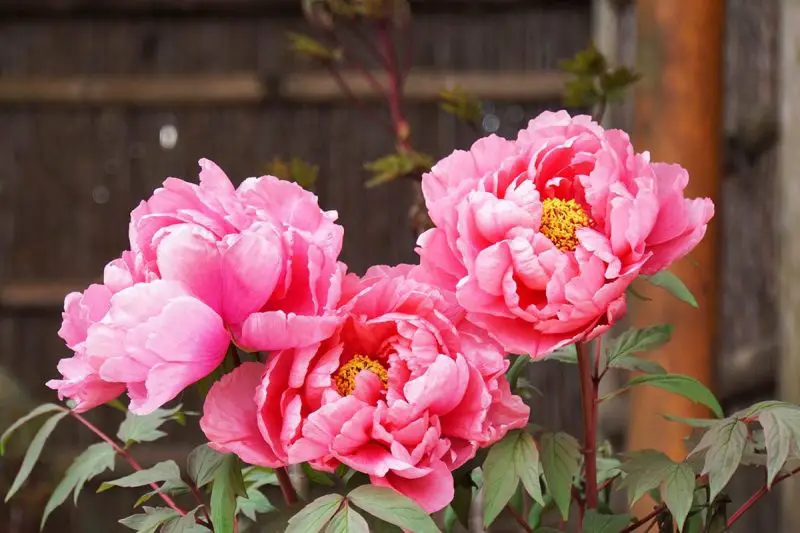Peonies are the crown jewels of spring gardens. With their lush, full blooms and enchanting fragrance, they capture attention like few other flowers can. Whether in pastel pinks, bold reds, or creamy whites, peonies have the power to elevate any garden space. However, if you’ve ever wondered why your peonies don’t bloom as prolifically as you’d hoped—or why their blossoms fade too quickly—you’re not alone.
Achieving bigger, longer-lasting peony flowers takes more than just planting and waiting. Peonies are hardy and long-lived, but they do demand thoughtful, consistent care to reach their full potential. From soil preparation to pruning, and from feeding to disease prevention, this guide will walk you through everything you need to know about how to care for peonies like a pro.
Understanding Peonies and Their Growth Cycle

Before diving into care techniques, it’s helpful to understand the growth cycle of a peony plant. Most peonies fall into one of three categories: herbaceous, tree peonies, and Itoh hybrids (a cross between the first two). Despite their differences in form and structure, they all follow a relatively similar pattern of seasonal growth.
The Annual Life Cycle of Peonies
In early spring, red or pink shoots emerge from the soil as the plant awakens from dormancy. This is followed by vigorous leaf growth and, eventually, the formation of large buds that swell and open into spectacular blooms. After flowering, the plant transitions into its energy-building phase, where it directs nutrients into strengthening the root system for the following year.
By late fall, the foliage dies back, especially in herbaceous varieties, and the plant enters dormancy again. Understanding this cycle is crucial because every stage—sprouting, blooming, feeding, and resting—requires a slightly different approach to care.
Site Selection and Soil Preparation
The journey to larger, longer-lasting peony blooms begins long before the first sprout appears. Proper planting location and well-prepared soil set the foundation for a healthy plant.
Choosing the Right Location
Peonies are sun-lovers. To produce abundant, full blooms, they need at least six hours of direct sunlight per day. Morning sun is ideal because it helps dry dew from the leaves, reducing the risk of fungal diseases. Partial shade may be tolerated, but it often results in fewer and smaller flowers.
Equally important is air circulation. Peonies dislike being crowded, so it’s best to plant them with enough space around for air to flow freely. Avoid spots near large trees or dense shrubs, which can compete for nutrients and light.
Preparing the Soil for Optimal Growth
Peonies thrive in rich, well-draining soil. Heavy clay or soggy areas can cause root rot, which is one of the leading reasons peonies underperform. If your soil is dense, amending it with compost, aged manure, or coarse sand can drastically improve drainage and fertility.
The soil pH should be neutral to slightly alkaline, ranging from 6.5 to 7.5. Conducting a soil test before planting can give you valuable information and help you amend accordingly. Adding lime to acidic soil or sulfur to overly alkaline soil can help balance pH over time.
Proper Planting for Stronger, Blooming Peonies
Even with the right conditions, poor planting techniques can set your peony back by years. Peonies are known for their longevity and can live for decades, but only if they’re planted correctly from the start.
Depth and Spacing Matter
One of the most common mistakes gardeners make is planting peonies too deep. For herbaceous and Itoh peonies, the eyes (buds) of the root should sit no more than 1 to 2 inches below the soil surface. If they’re buried too deep, the plant may grow lush foliage but fail to produce flowers.
Spacing should be at least 2 to 3 feet apart to accommodate mature plant size and promote airflow. This helps prevent disease and gives each plant the room it needs to develop fully.
Watering Techniques for Lasting Blooms
Peonies have moderate water needs, but the timing and method of watering can significantly impact their flowering quality.
Consistent Moisture Is Key
During active growth in spring and early summer, peonies appreciate regular moisture. The soil should stay consistently damp but never waterlogged. Overwatering can suffocate the roots, while underwatering during bud development can cause blooms to be smaller or drop prematurely.
A slow, deep soak once a week is usually sufficient, especially during dry spells. Watering at the base of the plant, rather than from overhead, helps prevent fungal problems like botrytis.
Fertilizing for Bigger Peony Flowers
Proper nutrition can make a dramatic difference in bloom size, color vibrancy, and plant vigor. However, peonies are not heavy feeders and can suffer if over-fertilized.
When and What to Feed Your Peonies
Early spring is the best time to apply fertilizer—just as the shoots are emerging. A balanced, slow-release fertilizer with equal parts nitrogen, phosphorus, and potassium is ideal. Too much nitrogen encourages leafy growth at the expense of flowers, so avoid high-nitrogen formulations.
Mid-season, after flowering, another light feeding can help the plant store energy for the following year. Compost or well-rotted manure applied around the root zone can also provide a gentle nutritional boost while improving soil structure.
Supporting and Deadheading Blooms
Large peony blossoms can become top-heavy, especially after rain. Without proper support, the stems may bend or break, causing flowers to droop or collapse.
Using Plant Supports and Cages
Installing a peony ring or plant support in early spring, as shoots begin to grow, can help keep stems upright. Waiting too long often results in damaging the stems as you try to force the support over a growing plant.
When blooms fade, deadheading is essential. Removing spent flowers prevents the plant from diverting energy into seed production and instead encourages stronger roots and foliage. Use clean, sharp garden shears to snip just below the flower head.
Pruning and Fall Cleanup
Peonies require minimal pruning, but timely cleanup ensures the plant remains healthy and ready to bloom vigorously year after year.
How and When to Cut Back Peonies
For herbaceous peonies, wait until the foliage dies back naturally in the fall, then cut it down to ground level. This reduces the chance of pests and diseases overwintering in the dead plant matter.
Tree peonies, however, should not be cut to the ground. Instead, prune them lightly in early spring to remove dead or damaged wood and shape the plant.
Always discard peony foliage in the trash rather than composting it, especially if you notice signs of disease. This prevents fungal spores from returning to your garden next season.
Disease Prevention and Pest Control
Even healthy peonies are susceptible to a few common diseases, particularly in humid or rainy climates.
Recognizing and Managing Common Issues
Botrytis blight is the most frequent problem. It often appears as blackened buds or gray mold on leaves and stems. Ensuring proper spacing, avoiding overhead watering, and cleaning up debris can drastically reduce its presence.
Ants are commonly seen on peony buds, but they are not harmful. They are attracted to the sugary nectar but do not damage the flowers. In fact, they can help keep other, more harmful pests at bay.
If you notice yellowing foliage, stunted growth, or malformed buds, it may be a sign of root rot or viral infection. In such cases, removing and destroying the affected plant may be necessary to protect nearby specimens.
Dividing and Replanting for Long-Term Health
Peonies don’t need frequent division, but after 10 to 15 years, they may become overcrowded or stop blooming as vigorously.
When and How to Divide Peonies
The best time to divide peonies is in the fall, after the foliage has died back. Gently dig around the root clump and lift it from the soil. Use a clean, sharp knife to divide the root mass into sections, each with at least 3 to 5 healthy eyes.
Replant immediately, being mindful of depth, and water well. Newly divided plants may take a year or two to return to full bloom but will reward you with stronger performance long-term.
Frequently Asked Questions About Caring for Peonies
Why are my peonies not blooming?
There are several reasons why peonies may fail to bloom. The most common is planting them too deeply—if the eyes (buds) are buried more than 2 inches below the soil surface, the plant may produce foliage but no flowers. Other causes include insufficient sunlight, lack of maturity, or excessive nitrogen in the soil.
When is the best time to plant peonies?
The best time to plant peonies is in the fall, typically from late September to early November. Planting during this period allows the roots to establish before winter dormancy and encourages strong growth and flowering in the following spring.
How much sun do peonies need to thrive?
Peonies need at least six hours of direct sunlight per day to bloom well. Morning sun is especially beneficial because it helps dry moisture off the leaves, reducing the risk of fungal diseases. While they can tolerate partial shade, reduced sunlight often leads to fewer or smaller flowers.
How often should I water my peonies?
Peonies should be watered deeply once a week, especially during dry periods. It’s important to keep the soil evenly moist during their growing season, particularly when buds are forming. Avoid overwatering, as peonies are susceptible to root rot in soggy soil.
What is the best fertilizer for peonies?
A balanced fertilizer with equal parts nitrogen, phosphorus, and potassium—such as a 10-10-10 or 5-10-5 mix—is suitable for peonies. Apply it in early spring as new growth appears, and optionally again after flowering. Avoid fertilizers high in nitrogen, which promote leaf growth over blooms.
Should I deadhead peonies after blooming?
Yes. Deadheading helps direct energy back into the roots rather than seed production. By removing spent flowers just below the bloom, you promote stronger growth and can even improve the size and number of future blooms.
Do I need to cut back peonies in the fall?
For herbaceous peonies, cutting back dead foliage in late fall is essential. This practice prevents overwintering pests and diseases and prepares the plant for healthy regrowth. Tree peonies, on the other hand, should not be cut to the ground and only require light pruning in spring.
Can I divide peonies to propagate them?
Yes, but peonies do not require frequent division. If a plant becomes overcrowded or stops blooming, you can divide it in the fall. Carefully dig up the clump, cut it into sections with 3 to 5 eyes each, and replant them at the proper depth. Be patient—newly divided plants may take a year or two to flower again.
Final Thoughts: Your Path to Bigger, Longer-Lasting Peony Blooms
Caring for peonies doesn’t have to be complicated, but it does require commitment and attention to detail. From the way you plant them to how you water, feed, and prune, each decision plays a role in the quality and longevity of your blooms.
By choosing the right location, preparing the soil, supporting the flowers, and staying on top of maintenance, you’ll be well on your way to enjoying bigger, longer-lasting peony flowers that return stronger with every season. Peonies are a gift that keeps on giving—and with a little effort, yours will become the showpiece of your garden year after year.






